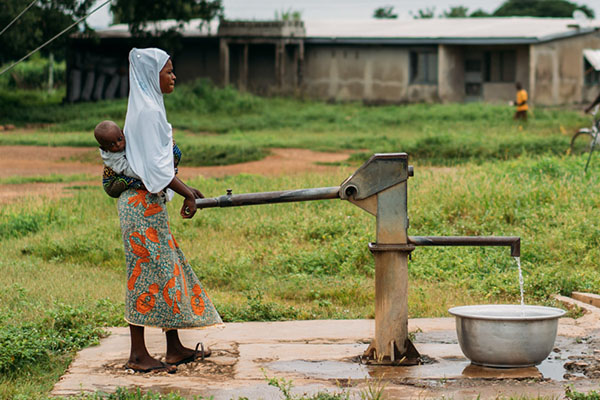
Gender in water and sanitation: empowerment by numbers
Adaptation to water insecurity can create valuable opportunities to redress imbalances in decision-making power between men and women, or between different ethnic and socio-economic groups. When it comes to the issue of water, sanitation and hygiene (WASH), a Stockholm Environment Institute (SEI) project is developing a new Empowerment in WASH Index that aims to identify those imbalances and formulate a way to measure success.
“We don’t have enough water … What should we do?” This simple question encapsulates the dilemma faced daily by many rural women in areas without water security. While men often react to seasonal water scarcity by migrating to find paid work, women stay at home to keep the household and farm running, the family clean and fed.
They cope with water scarcity by, for example, strictly rationing household water use, giving up small side-businesses, or getting children to help collect water. Often the only available water comes from sources shared with livestock or contaminated with dangerous pathogens.
Water scarcity is likely to become an even bigger problem in the coming years, as climate change interacts with the region’s already volatile climate. That’s why organizations, like SEI research partner WaterAid, are working with communities and local authorities in West Africa to devise long-term adaptation plans.
These plans could alleviate much of the pressure on women. But they could also perpetuate existing inequalities and risks, if they do not take into account the different ways men and women experience and cope with water scarcity. In particular, if men and women are to have an equitable future, it is vital that women are given an equal say in the planning process.
Understanding women’s WASH vulnerability
A project supported by a REACH catalyst grant aims to develop a research tool to explore and quantify women’s empowerment in relation to water, sanitation and hygiene (WASH).
The first phase of the project included a research visit to Burkina Faso in 2017, to interview villagers and other stakeholders about the different ways men and women are exposed to WASH insecurity.
Among the initial findings, several stood out. Payment of water fees is usually considered men’s responsibility, while collecting water for the household is considered women’s work. Men often respond to water scarcity by migrating for work; while they send home remittances, they do not bear the day-to-day burden of coping with water scarcity. Water insecurity creates poverty traps, as it reduces income, and increases the likelihood of illness from using contaminated water supplies. And despite their day-to-day responsibility for water in the house, women are given little say in community-level or local authority decisions related to water and sanitation.
An index of empowerment
While these findings can directly help organizations like WaterAid to support community adaptation plans, they are also raw material for developing an Empowerment in WASH Index.
Inspired by the International Food Policy Research Institute’s (IFPRI) Women’s Empowerment in Agriculture Index, the Empowerment in WASH Index will look at differences in, for example: decision-making power in the household and in the community; access to income; and time use, to quantify empowerment in a way that allows comparison over time and between populations.
The index will be co-developed with stakeholders from community up to national level and practitioner networks in Burkina Faso and Ghana.
The key route to impact of the Empowerment in WASH Index will be its ability to measure empowerment in a consistent, comparable way. This will be invaluable in project design, as well as in monitoring and evaluating the results.
This post was originally published on the website of the Stockholm Environment Institute (SEI).
Related Projects

